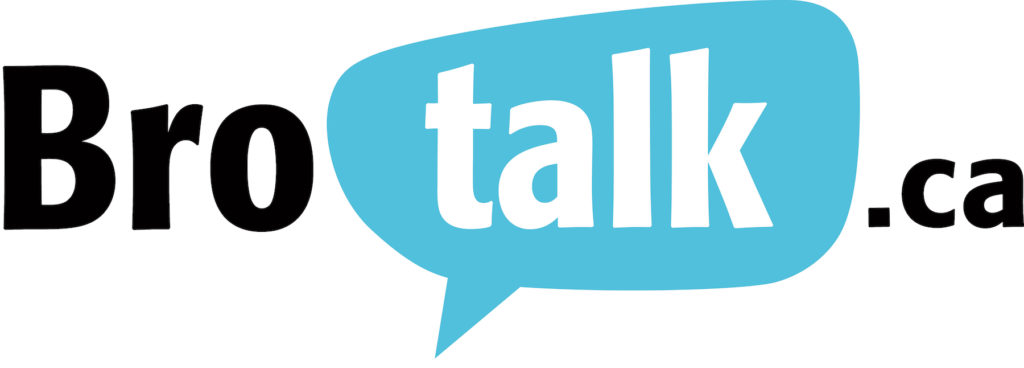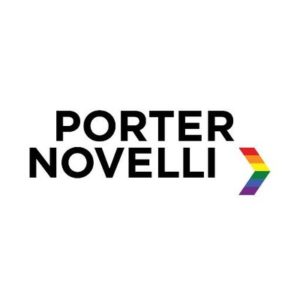Kids Help Phone, a Canadian charity offering the only national 24/7 professional phone counselling and information service for young people, spent 16 months in 2014/2015 with the support of Movember Foundation developing a solution for a crisis situation—an increasing number of teenage boys age 14-18 experienced emotional distress, were reluctant to seek help, and many succeeded in harming themselves, including committing suicide. In fall 2015, Kids Help Phone was ready to launch BroTalk, a bilingual online and phone service to provide counseling support for males in the age group.
The organization approached Porter Novelli to design and execute a national earned media launch for BroTalk in October 2015 to reach several stakeholder groups—parents, individual donors, corporate donors, government and board members. The charity also wanted to reach end user audiences and thus managed a separate social marketing campaign for this purpose. The agency’s strategy created superb visibility—on the day of the media launch alone, more than 90 stories (29 million media impressions) were generated in 24 hours. Read on to find how the campaign team achieved—and exceeded—its goals, and earned the agency and its client a Bronze Award in Bulldog Reporter’s 2016 Not-for-Profit Awards.
The Research: Kids Help Phone developed BroTalk based on a combination of academic research, focus group meetings with teen boys from different regions and ethnic backgrounds across Canada, and content testing and analysis with these target groups. The charity learned that teen guys view asking for help as a sign of weakness, in part because of the gender stereotypes and emotional stigma they experienced. Second, teen guys trust their male peers the most and prefer their support. Third, in crisis situations, phone counselling is still considered the most effective method. This learning helped the charity design a targeted and integrated online and phone-based service to help teen guys acknowledge their emotional distress, and seek support early using various modes of communication, including counselling, when required.
“The challenges of this campaign were twofold. First, we had to highlight the urgency and gravity of the social issue that BroTalk was designed to solve, including to encourage teen guys to acknowledge and seek help for their emotional problems,” explains Eric Tang, Senior Vice President, Porter Novelli Canada. “Second, we had to manage the concerns and expectations of different stakeholders, including the Board of Directors at Kids Help Phone, the charity, its donors, as well as BroTalk’s funding partner. We had to clearly define the objectives of the mainstream media relations campaign for BroTalk to: 1) solicit support of donors, parents, educators and health care providers for the program by making them aware of this new resource for teen guys; and 2) demonstrate the charity’s leadership in serving the teen guy segment.”
The Strategy: By responding to a national crisis among teen guys, BroTalk allowed Kids Help Phone to demonstrate to donors, government, parents and partners the charity’s leadership in providing innovative services to young people growing up in our digital world. To communicate the charity’s leadership to these stakeholders, a focus on reaching high- impact, top-tier media outlets in major English and French urban centers would generate the greatest impact and meet their resources and time constraints. If major media coverage could help raise teen guys’ awareness of BroTalk as well, it would be a bonus.
“Stakeholder management is a common challenge for not-for-profit campaigns. Unlike a for-profit campaign, a charity would not overtly de-position other charities even though they are all competing for support from donors and volunteers. As such, charities have to focus on the urgency and significance of the social problems they are dedicated to solve to impress their supporters,” says Tang. “Another unique challenge for many charities and non-profit organizations is their highly consensus based culture. The decision-making process is typically longer compared to many for-profit organizations of the same size because the marketing and communications departments will need to seek a high level of alignment internally and externally before a campaign is launched.”

The Execution: The PR team, which included staffers from Kids Help Phone and Porter Novelli, took an issues-driven approach to analyze related issues that were top-of-mind among the targeted stakeholders identified above. Emotional distress, teen suicide, cyber-bullying and teen relationships were all pressing issues under the umbrella category of teen mental health that these stakeholders were aiming to tackle. These issues had also been covered extensively by the dailies, broadcasters and specialty outlets, including parenting and health media.
“We built our campaign on solid research. We leveraged the charity’s extensive research on teen guys and how they cope with emotional issues,” offers Tang. “The insight from this research helped us crystalize the gravity of the issue, linking pressing challenges such as body image, cyber-bullying and relationships to teen guys’ reluctance to seek help and the consequences of that. We also selected English and French media who would make the most impact across the nation. To bring the issue to life, we staged the media launch in a downtown high school with a teen advocate who shared his experience on dealing with and helping other teen guys with their emotional issues.”
A closer look at these stakeholders revealed several insights, including:
- Parents and other teens’ caregivers cannot keep up with the ever-changing digital communications that their children use every day.
- Donors are seeking proof that their contributions are delivering tangible results. Government agencies are expecting charities to collaborate to demonstrate efficiencies and generate innovative solutions.
- Board members are seeking reassurance that the charity is staying relevant. Our communication through the media should respond to these interests.
To augment Kids Help Phone’s effort to reach BroTalk’s end-users, the team worked with the charity to analyze the types of content that would resonate with this audience. They also identified the types of anticipated media coverage to be amplified through its Facebook and Twitter channels and through its media sponsor’s Sympatico portal.
Media outreach was timed two days before World Mental Health Day to leverage the anticipated news agenda. We positioned BroTalk as a new, essential counselling service and an answer to the less-discussed teen boys’ emotional and mental health problems, and articulated how it can eliminate the barriers and stigma for teen guys to seek help.
“Media relations efforts during the campaign were very targeted and occurred in three stages—embargoed pre-briefings with select national and regional media, day-of-announcement interviews and photo opportunities at the launch event, and post-launch tier-two media outreach. The PR team shared with reporters the research supporting the formation of BroTalk, insights gathered from interviewing teen guys, and how BroTalk brings a solution to this national crisis among teen guys. The PR team offered media interviews with Kids Help Phone’s spokespeople including President and CEO, Sharon Wood, Vice President, Counselling Services and Programs, Alisa Simon, and directeur des services cliniques che Jeunesse j’écoute (Kids Help Phone’s French name), Alain Johnson,” Tang relates.
“Kids Help Phone chose to launch BroTalk at Jarvis Collegiate Institute in downtown Toronto because of its strategic location for media and the strong multi-ethnic representation of its students. The event was timed at 10 a.m. to ensure the best opportunity to attract TV cameras, and print and online reporters. The charity invited mental health advocate and former Kids Help Phone service user Aidan Scott to personify the story and bring authenticity to the issues BroTalk was designed to address,” he adds.
“Day-one media coverage generated such significant interest that it lead to additional post-event interview requests from media which the PR team continued to support for the client days after the launch.”
The Results: In a 24-hour period, BroTalk garnered 29 million media impressions from coverage in 85 tier-one media outlets across Canada including The Canadian Press, Canada AM, CTV News, Global News, Metro News, The Globe and Mail and CBC Radio One. Twenty media interviews were conducted during that 24 hour-period. An additional one million impressions from eight stories were generated after the launch. Nearly every article featured a spokesperson quote and all articles were positive in tone and effectively captured BroTalk’s key messages.
The use of media relations to support BroTalk was considered a success by the charity for the following reasons: the excitement and key message penetration created by the positive media coverage met or exceeded the expectations of two stakeholder groups—board members and the Movember Foundation. The coverage favorably positioned the charity as an innovative solutions provider tackling a pressing but often ignored societal issue. The timing of the success of the campaign also created momentum for the charity’s fundraising efforts leading up to the holiday season after the launch, having demonstrated to individual donors the impact their contributions could actually make.
Key Campaign Takeaways: At the outset, the PR team understood that mainstream media might not effectively reach BroTalk’s end-users (teen guys age 14-18). As such, no formal mechanism was set to measure the correlation or causation between the media coverage and the usage uptake. However, the charity’s metrics report showed that BroTalk’s usage stayed strong in November but weakened by January 2016. Additional subsequent media relations effort might have helped augment the charity’s social marketing effort in reaching teen guys.
Execution-wise, the PR team understood the timing restrictions (only three weeks from PR planning to execution) and budget constraints for the launch. Their issues-driven approach and the timing enabled the team to strategically position BroTalk in the context of a national crisis and be part of the larger World Mental Health Day conversation.
The embargoed pre-briefings were critical to allow select tier-one media to work and release their stories early in the morning of the launch date, which in turn shaped the news agenda for the day. The lack of a third-party spokesperson in advance was a challenge as it limited their ability to fully shape the issue. To counter this disadvantage, the PR team ensured that information was available to media on hot topics such as body image, cyber-bullying and relationship issues.

